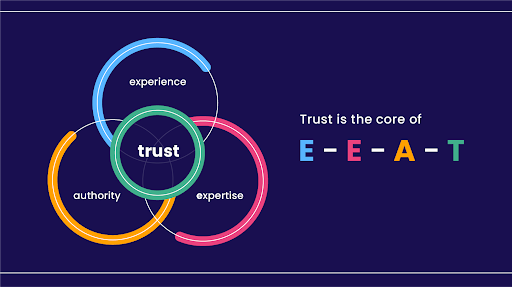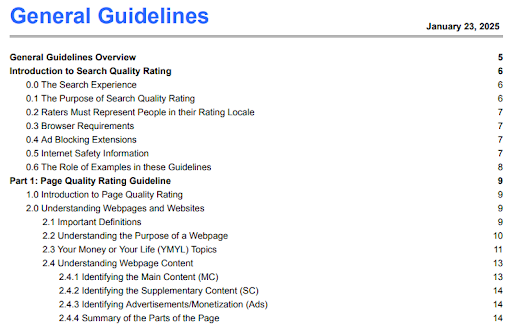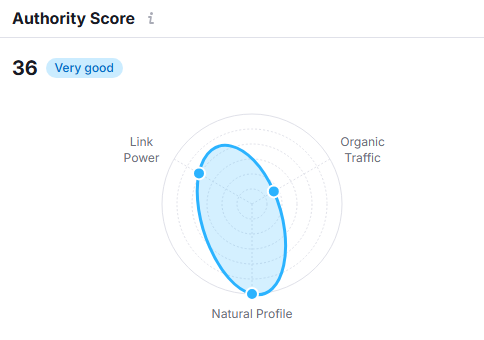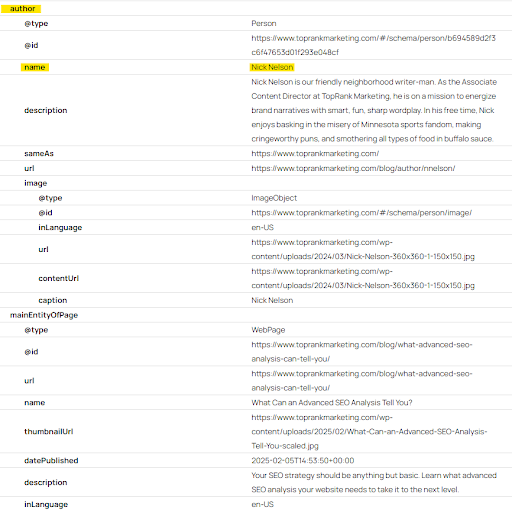Ten years ago, assessing a website’s ability to rank in Google search was a fairly straightforward, quantitative practice.
How many times does the target keyword appear? How high is the word count? How many backlinks does it have?
In those days, search algorithms were relatively easy to satisfy — if you knew how. Today, engines like Google (not to mention AI search) have become vastly more sophisticated in their ability to evaluate quality, relevance and trustworthiness of content, and harder to manipulate with workarounds like keyword stuffing.
The process behind this evaluation is more complex than counting keywords. Today, search engines are evaluating the quality of your content through a more complex calculation. But you can still tap into powerful score-based assessments of your website’s potential in search.
An E-E-A-T audit is your ticket to insight, action and improvement.
What is an E-E-A-T audit?
An E-E-A-T audit is a systematic evaluation of a website’s content, author credentials, domain reputation, and trust-building signals to identify strengths, weaknesses, and opportunities. Using Google’s E-E-A-T (Experience, Expertise, Authoritativeness, Trustworthiness) guidelines as a basis, these audits provide a clear picture of how well your content and website demonstrate the credibility needed to rank well in search results.
Learn all about these quality rater guidelines: What Are E-E-A-T Guidelines, and How Can You Optimize Your Site Around Them?
Optimizing your web presence in alignment with E-E-A-T principles is not just important for gaining search visibility. As you’ll soon see, these guidelines are meant to mimic the way human beings make judgments about credibility and reliability of a source, especially in the age of artificial intelligence.
Does Google trust your site enough to feature it in search results? Will people trust your site when they find it? E-E-A-T audits give you the answers.

Key components of an E-E-A-T audit
Comprehensive E-E-A-T audits examine each of the framework’s four facets using a combination of quantitative and qualitative factors. This process doesn’t focus on a single web page, but rather the full breadth of your brand’s digital presence. An effective E-E-A-T audit, like those we conduct at TopRank, will align directly with Google’s Quality Rater Guidelines.

Search Quality Evaluator Guidelines
Here are the four categories evaluated during an E-E-A-T audit.
Experience
- Does the content showcase first-hand experience and real-world insights?
- Are there personal anecdotes, case studies, relatable examples, or original research that differentiate this content from the AI-saturated crowd?
- Are subject matter experts involved in the creation of content?
Expertise
- Do the author, contributors and/or cited sources have verifiable recognition in their fields?
- Are there author bios highlighting relevant credentials, experience, and industry accolades?
- Are data, facts, and insights well supported with credible sources?
Authoritativeness
- Does the brand have a strong digital presence and reputation in its industry?
- Is the website frequently cited by other respected, authoritative sites?
- Are there guest contributions, media features, or backlinks from trusted domains?

Trustworthiness
- Does the website use HTTPS and have clear security measures in place?
- Is the site free of broken links, mobile-friendly, and otherwise easy for users to navigate?
- Are there terms of service, privacy policy, and data compliance features in place?
“In 2025, SEO isn’t just about keywords anymore (hasn’t been for a while now) — it’s about building genuine authority in your space … The winners will be those who focus on real expertise and value, not those trying to game the system.” – Ryan Leighty, Associate Search Director, TopRank Marketing
How to conduct an E-E-A-T audit and improve your score
Whereas SEO audits have become very streamlined thanks to tools that can handle much of the legwork, evaluating E-E-A-T is a more nuanced and complicated process. Because much of the process is geared toward assessing content quality, there are layers of analysis that go beyond simply tallying a word count or keyword total.
At a high level, these are the steps involved in auditing E-E-A-T health:
#1. Assess content for experience and expertise
Review key pages and blog posts to ensure the information is accurate, up-to-date and actionable. Look for opportunities to better demonstrate firsthand, experiential knowledge. Identify gaps where expert insights or industry data can be added. Ensure that site architecture and navigation make it intuitive for visitors to navigate and explore the depth of information.
#2. Evaluate author profiles
Wherever possible, verify that content on your site has a clearly defined author, with a link to a bio that explains their background and credentials. Linking to external profiles for the author — such as on LinkedIn — can also send signals of credibility. In the age of AI, it can hardly be overstated how valuable it is for insights and perspectives to be traceable to a real person, especially one who demonstrably knows their stuff.
#3. Analyze backlinks and industry mentions
This is one area where a qualitative lens is vital. Backlinks and press mentions are powerful indicators of your online rep, and the “who” matters much more than the “how many.” Use tools like Ahrefs or Semrush to inventory backlinks, following up with a plan to filter out those that are deemed spammy or irrelevant.
 #4. Enhance technical trust signals
#4. Enhance technical trust signals
There are some checklist-type steps you can take to convey a trusted and safe website. These include ensuring you have an SSL certificate, are implementing structured data, and are clearly displaying your privacy policy, terms of service, and contact information.
#5. Develop a prioritized list of actions
All of the insight gleaned from an E-E-A-T audit is not worth much unless you can turn it into action and impact. With a full handle on your website’s strengths and weaknesses across each E-E-A-T facet, it’s time to start prioritizing and pursuing improvements. Pinpoint mission-critical fixes and the most favorable effort-versus-benefit ratios. This will be a strategic process requiring skilled analysis.
#6. Maintain and improve over time
The nice thing about using a standardized and comprehensive process for evaluating your E-E-A-T score is that you can run it again later and compare results. When you see improvements you’ll know you’re on the right track. For larger websites with deep content libraries and frequent publishing cadences, it’s a good idea to run E-E-A-T audits at least annually.
How TopRank Marketing’s E-E-A-T Score Calculator works
At our agency, we’re big believers in E-E-A-T principles as the guiding light for high-quality, trust-building content. We think it’s important for every company to know where they stand through the lens of these key guidelines. That’s why we developed a proprietary E-E-A-T Score Calculator.
Through this process, we set up and run a series of custom crawls, which check for the presence of various signals on the site, and then run an analysis. A variety of specific criteria are evaluated, resulting in a 1-through-5 score for each E-E-A-T facet, and for the site as a whole.
Importantly, these criteria don’t matter only for search visibility. They are linked directly to the user experience, and real-life perceptions of your site. Here are some examples of specific criteria among the 40+ our E-E-A-T audit examines:
Content recency: Was a new blog post or article published in the past 30 days?
- Impact: This signals to your audience that your site provides fresh, up-to-date information.

Author schema: Is this type of structured data markup present in the HTML source code of the page?
- Impact: Visitors will be able to easily associate content with a real author, about whom they can learn more.

Credibility of cited sources: Does the site link externally to sources with similar or higher authority?
- Impact: People trust content that consistently references credible, reputable sources rather than low-quality sites and listicles.
Internal linking: Do pages link to other pages on the same domain, within the body of the content?
- Impact: This creates a good user experience by providing opportunities to learn more on related topics, and signals your breadth of coverage.
Customer service page: Is there a link on the website that uses the words Customer Service, Contact Us, Help, etc.?
- Impact: Options like these let visitors know that if they have questions or concerns, they can get in touch with someone from your company.
It all collectively amounts to a simple output on your E-E-A-T Scorecard that provides a summarized overview of how you’re doing and where you can get better. If you choose, you’ll have the option to unlock a full list of criteria and how you score for each, with granular tips to improve them.
Is Your SEO Strategy Ready For What’s Ahead?



